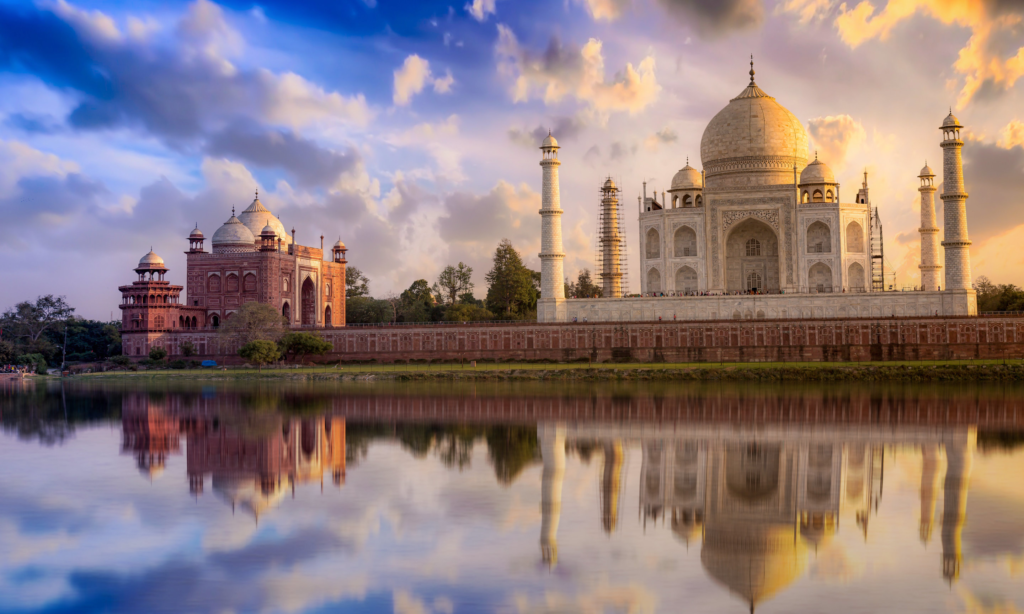
INTRODUCTION
The Taj Mahal, a sublime masterpiece of Mughal architecture, stands as an enduring symbol of love and architectural brilliance. This iconic mausoleum, located in Agra, India, has captivated the hearts of millions worldwide. In this article, we will delve into the rich history, architectural wonders, and cultural significance of the Taj Mahal.
A Glimpse into History
The Taj Mahal, built between 1631 and 1648 by the Mughal emperor Shah Jahan, is a testament to his profound love for his wife, Mumtaz Mahal. It was constructed as a mausoleum to house the remains of Mumtaz Mahal, who passed away during childbirth. This enduring love story forms the core of the Taj Mahal’s significance.
Architectural Marvels
1. Mughal Architecture at Its Finest
The Taj Mahal is a quintessential example of Mughal architecture, characterized by its intricate designs, symmetry, and exquisite use of white marble. The meticulous craftsmanship that went into its construction is awe-inspiring.
2. The White Marble Wonder
The Taj Mahal’s pristine white marble façade is one of its most striking features. It reflects different hues at different times of the day, adding to its ethereal beauty. The intricate carvings and inlay work with precious and semi-precious stones are a testament to the craftsmanship of the era.
Cultural Significance
3. UNESCO World Heritage Site
In 1983, the Taj Mahal was designated as a UNESCO World Heritage Site, recognizing its cultural and historical importance. It continues to attract scholars, historians, and tourists from across the globe.
4. Symbol of Love
The Taj Mahal has transcended its architectural significance to become an enduring symbol of love. Its story of undying love between Shah Jahan and Mumtaz Mahal has inspired countless couples.
Visiting the Taj Mahal
5. Planning Your Visit
If you plan to visit this architectural wonder, consider the best time to go, ticket prices, and any COVID-19 restrictions that may be in place.
6. Exploring the Complex
The Taj Mahal complex includes the main mausoleum, lush gardens, a mosque, and a guest house. Each element has its unique charm and historical significance.
Preserving the Taj Mahal
7. Environmental Challenges
The Taj Mahal faces environmental challenges, including air pollution and discoloration of the marble. Conservation efforts are ongoing to protect this marvel.
8. Restoration Initiatives
Various organizations and government bodies are working tirelessly to restore and preserve the Taj Mahal for future generations.
Conclusion
In conclusion, the Taj Mahal is not merely a structure; it is a living testament to the power of love, art, and architecture. Its timeless beauty continues to mesmerize and inspire all who are fortunate enough to witness it in person.



